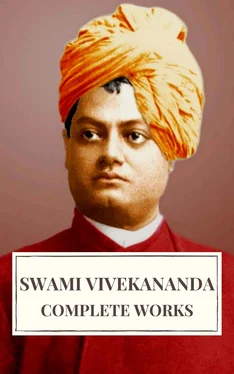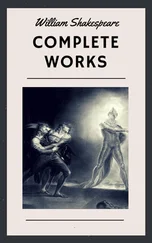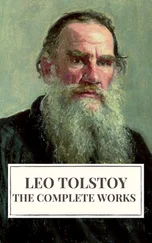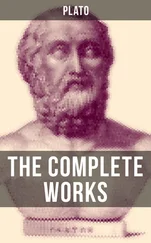
19. The states of the qualities are the defined, the undefined, the indicated only, and the signless.
The system of Yoga is built entirely on the philosophy of the Sânkhyas, as I told you before, and here again I shall remind you of the cosmology of the Sankhya philosophy. According to the Sankhyas, nature is both the material and the efficient cause of the universe. In nature there are three sorts of materials, the Sattva, the Rajas, and the Tamas. The Tamas material is all that is dark, all that is ignorant and heavy. The Rajas is activity. The Sattva is calmness, light. Nature, before creation, is called by them Avyakta, undefined, or indiscrete; that is, in which there is no distinction of form or name, a state in which these three materials are held in perfect balance. Then the balance is disturbed, the three materials begin to mingle in various fashions, and the result is the universe. In every man, also, these three materials exist. When the Sattva material prevails, knowledge comes; when Rajas, activity; and when Tamas, darkness, lassitude, idleness, and ignorance. According to the Sankhya theory, the highest manifestation of nature, consisting of the three materials, is what they call Mahat or intelligence, universal intelligence, of which each human intellect is a part. In the Sankhya psychology there is a sharp distinction between Manas, the mind function, and the function of the Buddhi, intellect. The mind function is simply to collect and carry impressions and present them to the Buddhi, the individual Mahat, which determines upon it. Out of Mahat comes egoism, out of which again come the fine materials. The fine materials combine and become the gross materials outside — the external universe. The claim of the Sankhya philosophy is that beginning with the intellect down to a block of stone, all is the product of one substance, different only as finer to grosser states of existence. The finer is the cause, and the grosser is the effect. According. to the Sankhya philosophy, beyond the whole of nature is the Purusha, which is not material at all. Purusha is not at all similar to anything else, either Buddhi, or mind, or the Tanmatras, or the gross materials. It is not akin to any one of these, it is entirely separate, entirely different in its nature, and from this they argue that the Purusha must be immortal, because it is not the result of combination. That which is not the result of combination cannot die. The Purushas or souls are infinite in number.
Now we shall understand the aphorism that the states of the qualities are defined, undefined, indicated only, and signess. By the “defined” are meant the gross elements, which we can sense. By the “undefined” are meant the very fine materials, the Tanmatras, which cannot be sensed by ordinary men. If you practise Yoga, however, says Patanjali, after a while your perceptions will become so fine that you will actually see the Tanmatras. For instance, you have heard how every man has a certain light about him; every living being emits a certain light, and this, he says, can be seen by the Yogi. We do not all see it, but we all throw out these Tanmatras, just as a flower continuously sends out fine particles which enable us to smell it. Every day of our lives we throw out a mass of good or evil, and everywhere we go the atmosphere is full of these materials. That is how there came to the human mind, unconsciously, the idea of building temples and churches. Why should man build churches in which to worship God? Why not worship Him anywhere? Even if he did not know the reason, man found that the place where people worshipped God became full of good Tanmatras. Every day people go there, and the more they go the holier they get, and the holier that place becomes. If any man who has not much Sattva in him goes there, the place will influence him and arouse his Sattva quality. Here, therefore, is the significance of all temples and holy places, but you must remember that their holiness depends on holy people congregating there. The difficulty with man is that he forgets the original meaning, and puts the cart before the horse. It was men who made these places holy, and then the effect became the cause and made men holy. If the wicked only were to go there, it would become as bad as any other place. It is not the building, but the people that make a church, and that is what we always forget. That is why sages and holy persons, who have much of this Sattva quality, can send it out and exert a tremendous influence day and night on their surroundings. A man may become so pure that his purity will become tangible. Whosoever comes in contact with him becomes pure.
Next “the indicated only” means the Buddhi, the intellect. “The indicated only” is the first manifestation of nature; from it all other manifestations proceed. The last is “the signless”. There seems to be a great difference between modern science and all religions at this point. Every religion has the idea that the universe comes out of intelligence. The theory of God, taking it in its psychological significance, apart from all ideas of personality, is that intelligence is first in the order of creation, and that out of intelligence comes what we call gross matter. Modern philosophers say that intelligence is the last to come. They say that unintelligent things slowly evolve into animals, and from animals into men. They claim that instead of everything coming out of intelligence, intelligence itself is the last to come. Both the religious and the scientific statements, though seeming directly opposed to each other are true. Take an infinite series, A—B—A—B —A—B. etc. The question is — which is first, A or B? If you take the series as A—B. you will say that A is first, but if you take it as B—A, you will say that B is first. It depends upon the way we look at it. Intelligence undergoes modification and becomes the gross matter, this again merges into intelligence, and thus the process goes on. The Sankhyas, and other religionists, put intelligence first, and the series becomes intelligence, then matter. The scientific man puts his finger on matter, and says matter, then intelligence. They both indicate the same chain. Indian philosophy, however, goes beyond both intelligence and matter, and finds a Purusha, or Self, which is beyond intelligence, of which intelligence is but the borrowed light.

20. The seer is intelligence only, and though pure, sees through the colouring of the intellect.
This is, again, Sankhya philosophy. We have seen from the same philosophy that from the lowest form up to intelligence all is nature; beyond nature are Purushas (souls), which have no qualities. Then how does the soul appear to be happy or unhappy? By reflection. If a red flower is put near a piece of pure crystal, the crystal appears to be red, similarly the appearances of happiness or unhappiness of the soul are but reflections. The soul itself has no colouring. The soul is separate from nature. Nature is one thing, soul another, eternally separate. The Sankhyas say that intelligence is a compound, that it grows and wanes, that it changes, just as the body changes, and that its nature is nearly the same as that of the body. As a finger-nail is to the body, so is body to intelligence. The nail is a part of the body, but it can be pared off hundreds of times, and the body will still last. Similarly, the intelligence lasts aeons, while this body can be “pared off,” thrown off. Yet intelligence cannot be immortal because it changes — growing and waning. Anything that changes cannot be immortal. Certainly intelligence is manufactured, and that very fact shows us that there must be something beyond that. It cannot be free, everything connected with matter is in nature, and, therefore, bound for ever. Who is free? The free must certainly be beyond cause and effect. If you say that the idea of freedom is a delusion, I shall say that the idea of bondage is also a delusion. Two facts come into our consciousness, and stand or fall with each other. These are our notions of bondage and freedom. If we want to go through a wall, and our head bumps against that wall, we see we are limited by that wall. At the same time we find a willpower, and think we can direct our will everywhere. At every step these contradictory ideas come to us. We have to believe that we are free, yet at every moment we find we are not free. If one idea is a delusion, the other is also a delusion, and if one is true, the other also is true, because both stand upon the same basis — consciousness. The Yogi says, both are true; that we are bound so far as intelligence goes, that we are free so far as the soul is concerned. It is the real nature of man, the soul, the Purusha, which is beyond all law of causation. Its freedom is percolating through layers of matter in various forms, intelligence, mind, etc. It is its light which is shining through all. Intelligence has no light of its own. Each organ has a particular centre in the brain; it is not that all the organs have one centre; each organ is separate. Why do all perceptions harmonise? Where do they get their unity? If it were in the brain, it would be necessary for all the organs, the eyes, the nose, the ears, etc., to have one centre only, while we know for certain that there are different centres for each. Both a man can see and hear at the same time, so a unity must be there at the back of intelligence. Intelligence is connected with the brain, but behind intelligence even stands the Purusha, the unit, where all different sensations and perceptions join and become one. The soul itself is the centre where all the different perceptions converge and become unified. That soul is free, and it is its freedom that tells you every moment that you are free. But you mistake, and mingle that freedom every moment with intelligence and mind. You try to attribute that freedom to the intelligence, and immediately find that intelligence is not free; you attribute that freedom to the body, and immediately nature tells you that you are again mistaken. That is why there is this mingled sense of freedom and bondage at the same time. The Yogi analyses both what is free and what is bound, and his ignorance vanishes. He finds that the Purusha is free, is the essence of that knowledge which, coming through the Buddhi, becomes intelligence, and, as such, is bound.
Читать дальше














